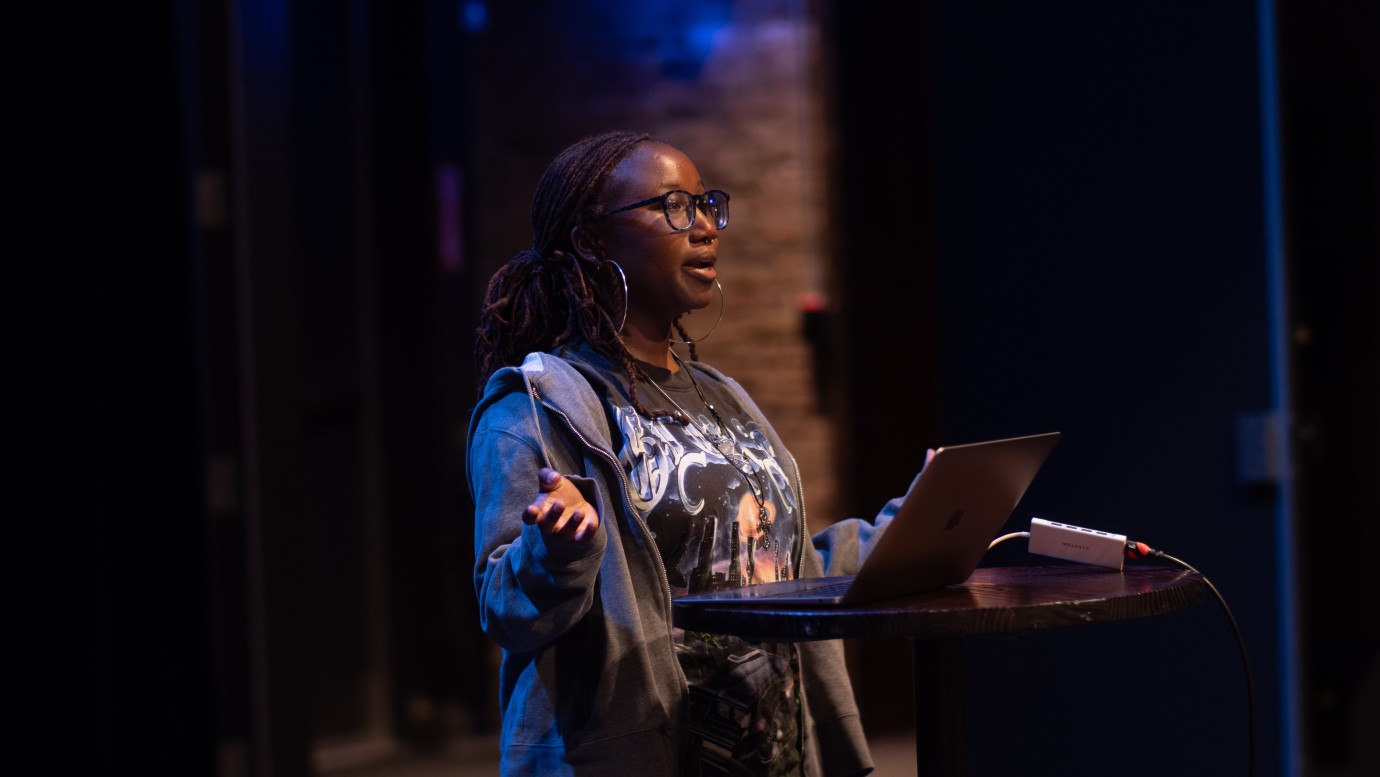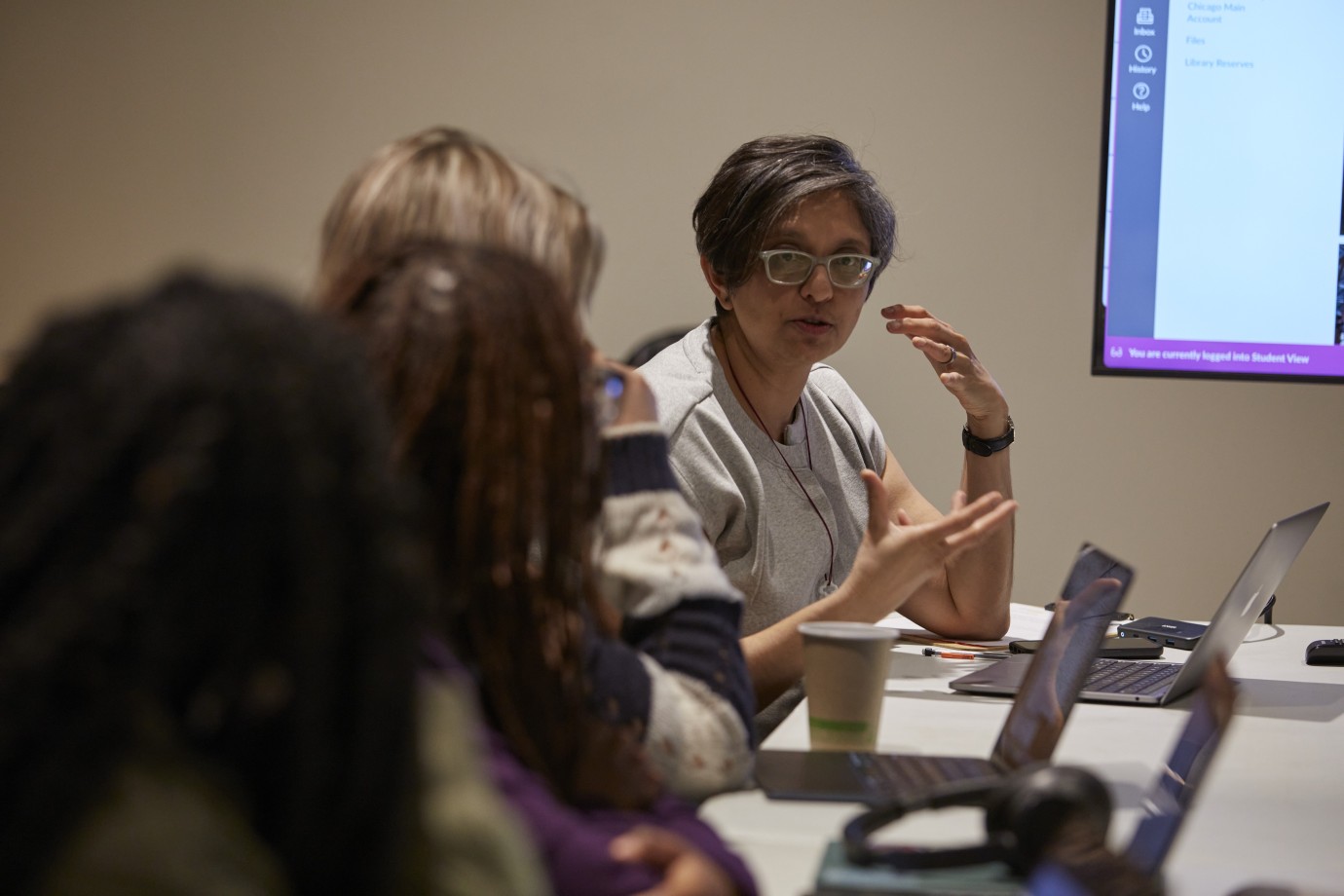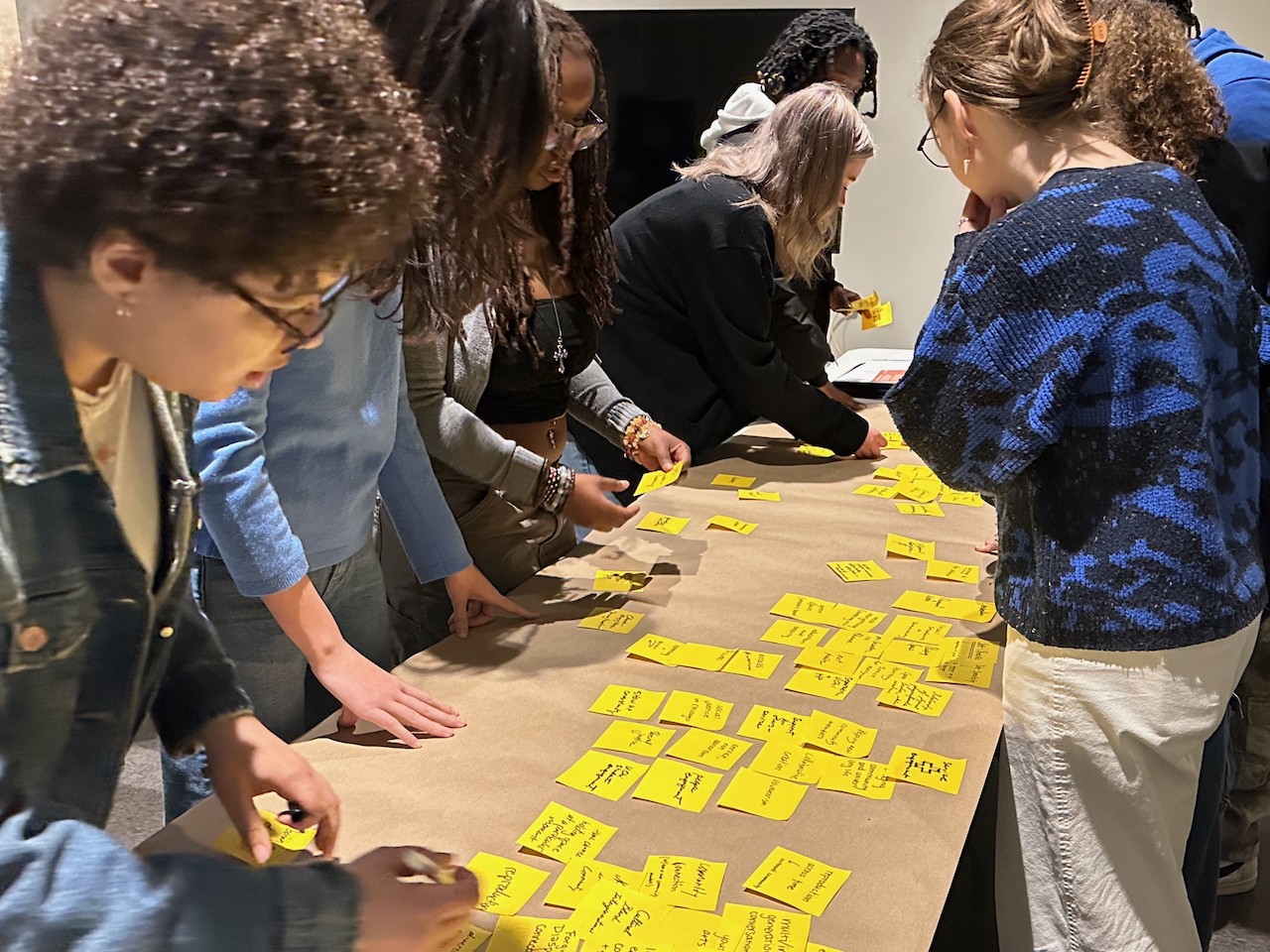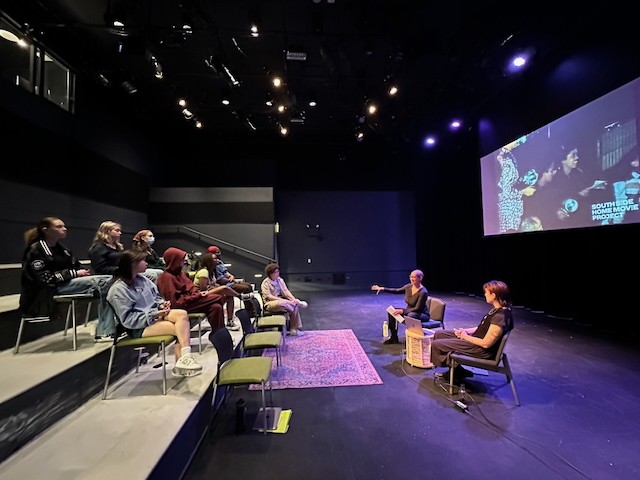When third-year Zaniah Wheeler thought about her old high school outside Houston, she remembered its struggles with drugs, fights and discrimination—issues that often overshadowed education.
But with the building slated for replacement, Wheeler wanted to give her community a way to move forward on the right foot. Her idea: a festival featuring a basketball tournament, picnic, student DJs and photo space where classmates and families could gather to say goodbye.
“I have had a hard time grappling with my experiences at the school,” said Wheeler. “I thought this was the perfect opportunity to reflect upon its effects and think about what they can change going forward to the next campus.”
Making the proposal was Wheeler’s final project for a new University of Chicago course, “Arts + Public Life: Relationships, Engagement and Cultural Stewardship on Chicago’s South Side.”
Arts + Public Life (APL), a unit within the University’s Division of the Arts & Humanities, fosters neighborhood vibrancy through the arts on Chicago’s South Side. Offered by APL for the first time last spring in partnership with Chicago Studies, the course engaged about a dozen students to explore how cultural programming can strengthen communities. The course invited students to consider how they might themselves become responsible stewards of this work.
Each week, students examined APL’s three pillars—relationships, community engagement and cultural stewardship—through readings, guest talks and workshops with APL staff. They then applied those lessons in projects tied to places they knew best, from neighborhoods in Chicago to hometowns across the country.

“The class came from the idea of how APL could be a resource for students,” said Prof. Nootan Bharani, who taught the course. “We have years of experience with community engagement and cultural stewardship, and we wanted to share that.”
Readings and guests offered background, inspiration and practical insight into APL’s cultural production processes. Workshops with APL team members at the Arts Block—a collection of cultural and commercial spaces along Garfield Boulevard between Prairie Avenue and Martin Luther King Drive in Washington Park—helped students refine their ideas throughout the quarter.
This resulted in their final projects, developing proposals for a cultural promotion for a specific place, which they presented to the class.

Students work together on a sorting activity to answer the question: "What is cultural production?" (Photo by Nootan Bharani)
Wheeler said she took the course because of a deep interest in community engagement. She designed her final project with the goal of helping those in her hometown of Spring, Texas, to “make peace with the complicated experiences and feelings” they had with the old high school.
“This event prioritizes taking time to cherish memories but also recognizing faults within the school system. The primary goal is to reflect on and imagine what the new campus needs,” she said.
Fostering neighborhood vibrancy through the arts
APL supports a rich ecosystem of artists, youth and entrepreneurs across the South Side, fostering collaborations and creations year-round.
Jessica Musselwhite, the executive director of UChicago Arts, was pleased that the course provided an opportunity for students of UChicago to get more involved with their communities and could learn from being in Washington Park.
Musselwhite, who was a guest to listen to presentations of students’ final projects, said the students from last spring’s course planned events that married attention to logistical detail with themes that were “exciting and engaged with big questions.”
That combination underpins much of APL’s broader mission.
“I think APL gives our Hyde Park neighbors a chance to visit and engage with a community that they may not have visited before and get exposed to artists they might not otherwise know,” said Musselwhite. “APL is a stable presence in the neighborhood, holding cultural events, offering support to South Side artists and offering a ‘third space’ in a world where there are fewer spaces to just be.”

Bharani sees this as just the first step in more course offerings from the APL—a strategy she believes will enrich how people experience arts across the country while deepening student engagement with the communities around UChicago, showing them art's vital role in society.
“I would love it if we could build a network of deeply engaged current students and alumni starting with this first course offering,” she said. “That’s what Arts + Public Life is about, right? We’re about relationships and engagement and each community gets to benefit from the combination of those two efforts.”
Learn more about this course and students' projects here.
This article was originally published by The College and is a part of a series called UChicago Class Visits, spotlighting transformative classroom experiences and unique learning opportunities offered at UChicago.
